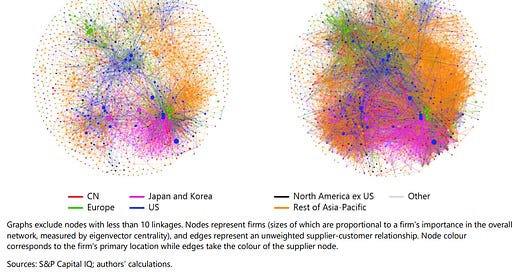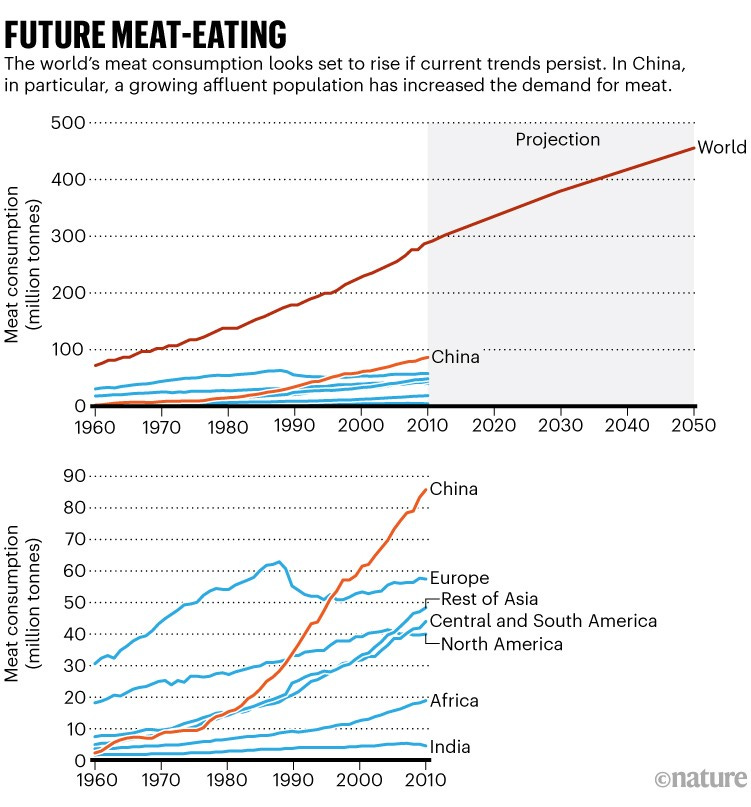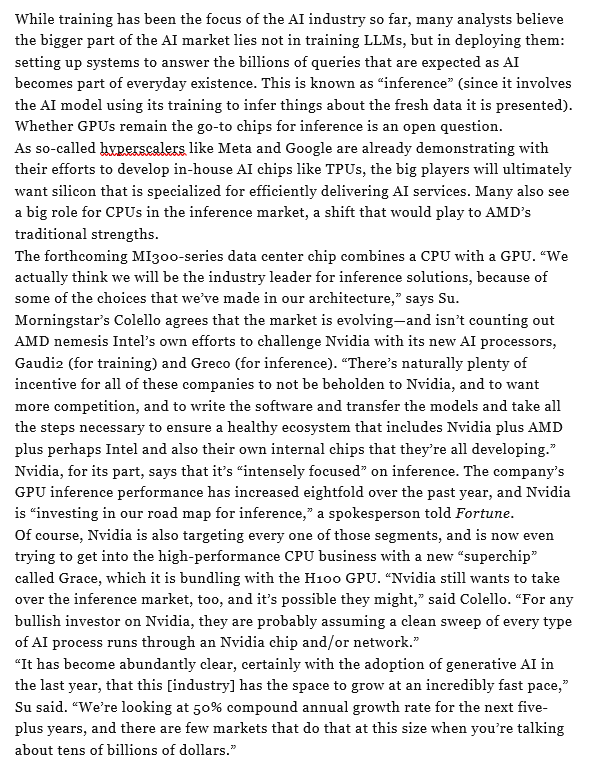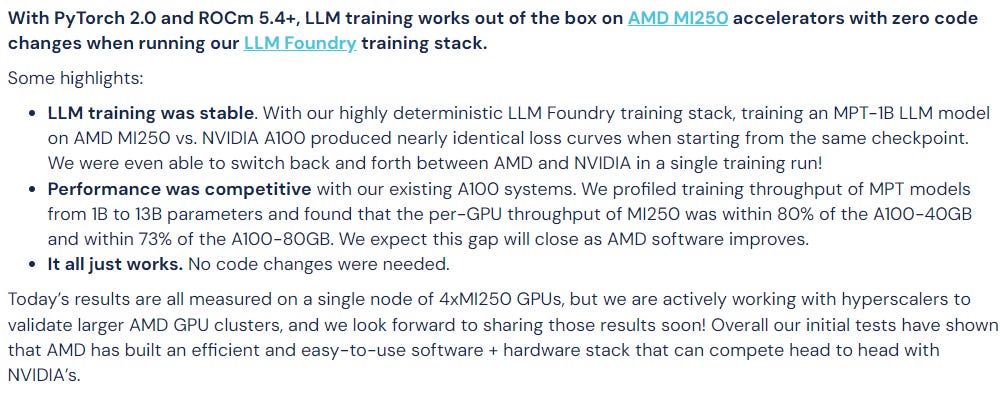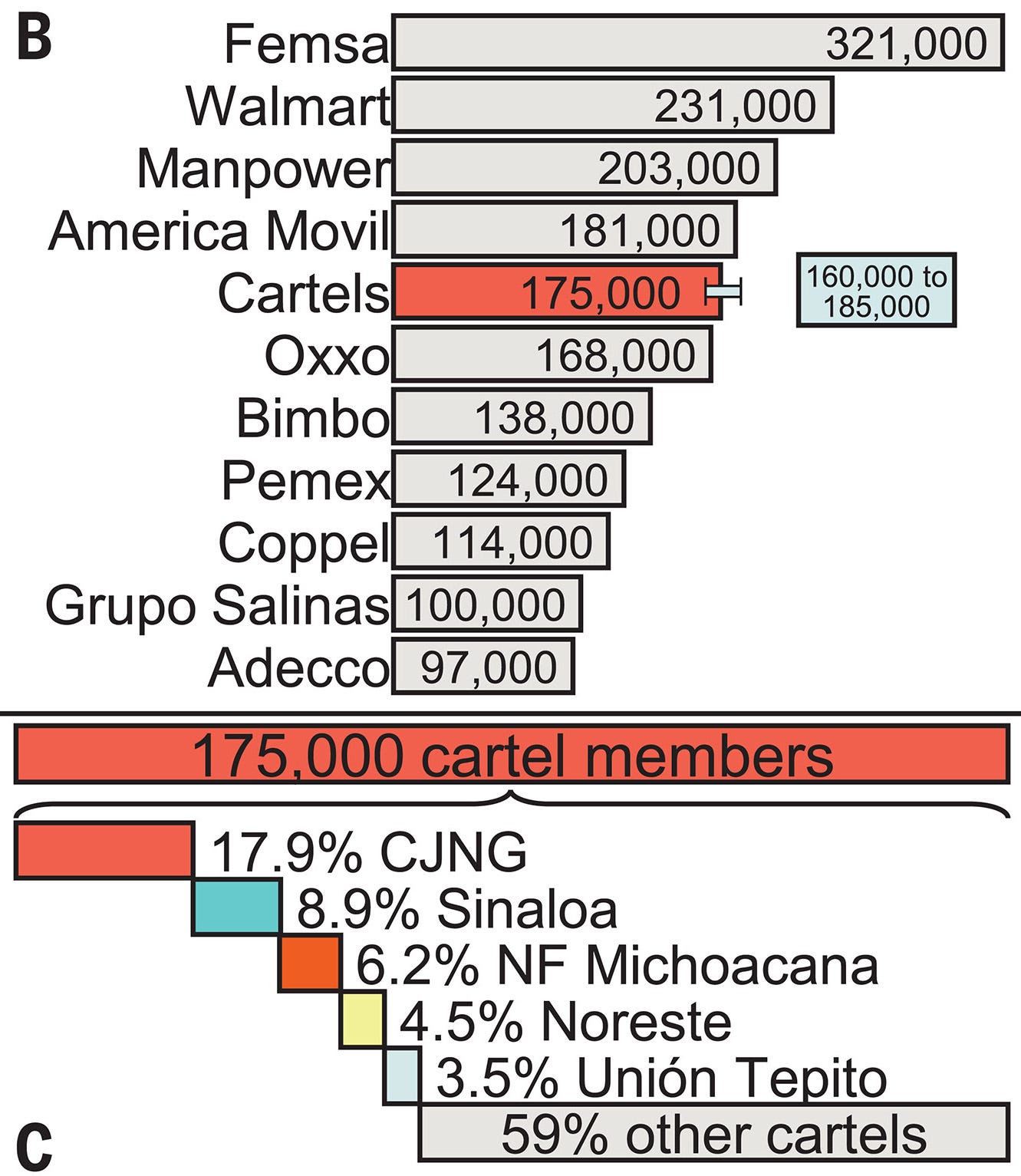Dose of Hope & Innovation in Atoms: science, medicine, engineering & robotics
“In Nature Methods this week, a new proof-of-concept demonstration of nanopore-based identification of amino acids and associated post-translational modifications. The impact of a nanopore-based protein sequencer would be significant, including more sensitive detection of proteins, improved characterization of post-translational modifications, and portable protein sequencing for applications such as point-of-care diagnostics” (link)
Breakthrough Prize in life sciences just went to researchers that identified the genetic risk factors for Parkinson’s. See this thread for a breakdown.
Podcast with lab scientist and founder of Bit Bio on its recent progress:
Data presented at International Society for Stem Cell Research conference shows unparalleled level of consistency across manufacturing of multiple human cell products. World leading stem cell biologists call the technology “a watershed moment for biology” and “a true disruptive innovation in stem cell biology, much as CRISPR has been for genetics”. bit.bio’s ioCells are already being used and enable large-scale experiments that underpin preclinical research and drug development. The consistency of the cells is enabling scientific breakthroughs and applications ranging from biohybrid devices, novel targets for neurodegeneration, and cultured meat. Analysis of the samples show fewer than 1% differentially expressed genes in bulk-mRNA sequencing experiments between manufacturing lots. This would be a massive breakthrough for the industrialization of cell-based research.
Enveda’s founder wrote a good blog post The Chemical Code: An Opportunity Bigger than the Genetic Code, with the following summary from Decoding Bio:
Viswa takes to the Enveda blog to pen his thoughts on decoding biology one step further than genetics. He brings up the excellent point that we’ve been so floored by genetic advances (which truly are amazing) that we’ve forgotten our understanding of the genetic code is not necessarily 100% complete and it is not the only way to view biology. In fact, zeroing in on this alone renders our picture of life itself incomplete. Instead, Viswa argues we should be looking at the chemical code making the point that genes, RNA, proteins all end up coding for things that do work—transferring energy and matter. Thus, chemistry is an underlying force stringing life together and our current understanding of the chemical code is severely lacking. Enveda is doing really cool work trying to crack this code by focusing on metabolomics. We won’t dive into it here but highly recommend reading Viswa’s full post to get a sense for how much we have left to discover and how one company is tackling the problem.
“Information isn’t life…a dead cell and a live cell have the same genome”. Instead, he contends, that metabolic flux —- the sum of continuous transformations of small molecules on a timescale of nanoseconds, nanosecond after nanosecond —- is the definition of being alive.
The new ARPA-H launched a project called Biomedical Data Fabric Toolbox aimed at improving the accessibility of biomedical research data by unifying research data from various health fields. The goal is to create a comprehensive search engine for various data types, enabling quicker and more precise insights into health-related questions. Initial partners include agencies like the National Cancer Institute, National Center for Advancing Translational Sciences, etc.
Scandinavian countries again a decade+ ahead of the world on social and environment issues. EVs & hybrids now 96% of car sales in Norway:
MIT Tech Review’s Top 15 climate tech companies of 2023
Air-to-Table Dining: Turning Greenhouse Gases into Meat
Air Protein has raised $107 million to create steak and scallop products from CO2. In June, the Bill & Melinda Gates Foundation and the Novo Nordisk Foundation invested $29.2 million into a Novozymes and Topsoe project that is using CO2 to produce proteins for human food without involving agricultural land.
Air Protein plans to replicate photosynthesis in the lab by placing oxyhydrogen microbes in a reactor to make macro- and micronutrients including proteins, fats, carbohydrates and vitamins.
NASA subject matter expert in biotech Bruce Link from the Kennedy Space Center says that although photosynthesis by carbon-fixing plants is the main route to food production, there are alternatives. “[Photosynthesis] can be done either by life forms or catalytically,” says Link. “If you are in an environment where sulfur or hydrogen are abundant, you can convert the CO2 into chains of carbon, which are basically oils.” The notion of creating food from CO2 has been gaining momentum. The European Innovation Council has just sunk $5.5 million into a project called Hydrocow: several European partners will work together to produce milk protein for human consumption made in the lab by anaerobic bacteria. The consortium includes the University of Groningen in the Netherlands, the RWTH Aachen University in Germany, Swiss biotech company FGen in Basel and Solar Foods located in Lappeenranta, Finland. Their goal is to genetically engineer microbes that feed on CO2 and hydrogen to secrete β-lactoglobulin, the major protein in whey from cow’s milk. Although milk has a multitude of other components, the consortium will start with β-lactoglobulin as it constitutes approximately 65% of the total whey protein.
The Finnish company Solar Foods is already producing food from CO2. At a Mediterranean restaurant on Singapore’s east coast, diners can order scoops of chocolate gelato and fresh pasta manufactured with the microbially made protein Solein. The protein is created in a similar way to the proposed Hydrocow protein. The microbe, which has not been genetically modified, is an anaerobic Xanthobacter found on a Finnish beach. It is placed in a bioreactor with CO2, hydrogen and salts. The end product is dried to become a turmeric-colored powder which the company calls Solein, with a protein content similar to that of steak. If liquid is added to the powder, it can be used as a binding agent and an alternative to eggs in food production.
Solar Foods CEO Pasi Vainikka says: “The technology gives humankind [the chance] to bypass photosynthesis and land use, and that has never happened before.” A life-cycle assessment comparing this new type of protein production found the environmental impact to be 47–99% lower with hydrogen-oxidizing bacteria than with traditionally produced peas or nuts. Solar Food claims that producing 1 kilogram of Solein emits 0.2 kilograms of CO2-equivalents, compared with 100 kilograms produced by beef rearing and 10 kilograms to produce chicken meat. When Solar Foods’ new factory opens in Finland at the end of the year, it expects to produce 100 tonnes of Solein a year.
Other big funders — the Bill and Melinda Gates and Novo Nordisk Foundation s — have stepped up to support CO2-driven fermentation platforms. Each is funding half of the activities of a new consortium that combines biotech and chemical engineering expertise from Danish companies Novozymes, of Bagsværd, and Topsoe, located in Lyngby, with Washington University, St. Louis and the Novo Nordisk Foundation CO2 Research Center at Aarhus University in Denmark. The aim is to investigate biological and electrochemical processes that turn CO2 into acetate. They will use it to create a mycoprotein that can substitute for meat.
Novozymes will spend the next two years proving the technology, then build a flagship facility so it can scale. Claus Crone Fuglsang, CSO of Novozymes, says: “Scaling to produce cost efficiently on acetate at a high-quality level is the primary challenge. The protein itself, or the food products it’s included in, must be consumer palatable, nutritious and affordable.”
Austrian biotech company Arkeon, based in Vienna, is also using CO2-consuming microbes to help create protein. It is using Methanothermobacter microbes that are found in hot springs or lakes to create protein ingredients. The company expects to use one-step fermentation, without genetic engineering, to produce 20 amino acids (including the eight essential amino acids needed by the body) by placing this microbe in a bioreactor with carbon dioxide and hydrogen. Taking carbon from CO2 and energy from hydrogen, the microbe spits out the amino acids. The resulting nutrients will be sold to food companies so they can use them in sports drinks, protein bars and plant-based meat alternatives. The company is now ready to leave the laboratory and scale up.
Michael Mitsakos, Arkeon’s co-founder says: “Our carbon-uptake approach is to ‘industry-capture’ the CO2 directly from CO2-producing sites … therefore preventing it from being emitted into our atmosphere.” They are in talks with potential partners regarding the CO2 supply for their bioprocesses. The team is now applying for regulatory approval to sell its products in Europe and the United States.
Even eschewing microbial fermentation, it is possible to capture atmospheric CO2 and turn it into a product. A startup in New York is already serving vodka made from CO2 to customers. Biochemist Stafford Sheehan joined marketing specialist Gregory Constantine in August 2017 to launch Air Vodka. The reaction first splits water into hydrogen and oxygen gas; they then take the hydrogen gas, mix it with CO2, and pass that over a catalyst. This hydrogenates the carbon dioxide; the resulting compound can be transformed into chemical products such as alcohol. The company recently raised $30 million in a series A, and has now expanded its product line to include jet fuel.
It also created a single-cell protein, Candida Utilis, from CO2 for the NASA Deep Space Food Challenge competition, which is designed to help feed a crew of four on a three-year mission. In work that is still unpublished, they made sugar with CO2 (which would be exhaled by astronauts) and then used it to feed yeast. The resulting tofu-like protein can be added to shakes or rolled out flat to create pasta or tortillas. The Air Company is now scaling up from a demo plant. “What I’ve learned from this whole process is discovering new chemistry is way easier than scaling it up and making it commercial,” says Sheehan.
Unlike crops, which rely on free sunshine to grow, CO2 food producers need to invest in expensive equipment, such as photovoltaic panels to help reap power. And direct air capture also doesn’t come cheap. But it won’t always be the case, says Dawid Hanak at the Net Zero Industry Innovation Centre at Teesside University in the United Kingdom. The equipment and the chemical materials that bind the CO2 currently costs about $600 for every tonne of CO2 removed. “Costs are expected to drop to between $125–335 per tonne of CO2 in the 2030s, similar to how the cost of solar energy fell over time,” says Hanak.
Sheehan believes sinking CO2 into food can make a dent in the world’s carbon emissions. “We can definitely do it. It’s going to take time and a lot of investment as all the infrastructure in the world doesn’t change overnight,” he says. “If we don’t have sustained effort, it’s not going to happen. We need sustained effort over decades.”
While the approaches above are sure to be more environmentally friendly than the first generation of alternative food companies, it’s entirely unclear what their economics look like. As mentioned, the first generation struggled mightily there too.
The Land of Bits: software, silicon, algorithms, and computation
In massive news from the AI community, researchers made a breakthrough in understanding how LLMs work under the hood, in turning them from black boxes to machinery in which each part can be decomposed. It’s now considered an engineering problem, though a very difficult one. Read Anthropic’s announcement on it:
“We hope this will eventually enable us to diagnose failure modes, design fixes, and certify that models are safe for adoption by enterprises and society. It's much easier to tell if something’s safe if you can understand how it works”
It’s hard for me to escape the conclusion this won’t be a good long/short pair trade, likely a matter of timing:
AMD CEO predicts 50% CAGR for the next 5 years for the AI chip market, landing it at $150B in 2027. Nvidia has 90%+ market share of AI training right now. But even Su acknowledges there’s work to be done. “I will be the first to say that our hardware is excellent and our software is continuing to get better over time,” she says. “For some of the AI applications that were written in the past, migrating them to AMD does take some work.” However, she argued, ROCm is “very well optimized” for newer AI workloads. (link) A former CUDA developer that then co-founded an LLM fine-tuning startup claims that AMD’s software platform has achieved parity with Nvidia’s.
This summer, MosaicML announced it could train models on AMDs chips similarly well as Nvidia’s:
AI wearables market starts to form:
Rewind Pendant - Necklace That Transcribes Everything You Say and Hear
Tab by Avi Schiffmann - Tab demo
Meta smart glasses - Introducing the New Ray-Ban | Meta Smart GlassesJ
OpenAI and Jony Ive in talks to raise $1B from SoftBank for AI device venture
C.R.E.A.M: macro, markets, commodities, and geopolitics
Great BIS research piece on global supply chains over the last couple years, finding some evidence of on-shoring, but also a lengthening of supply chains such that there’s more intermediaries between first supplier and final customer. It’s been a global phenomena but strongest in the supply chain from Chinese suppliers to US customers. Companies in Asia ex-China have "interposed" themselves between the two, creating illusion of "decoupling" without actually diversifying supply chains or increasing economic resilience, likely in order to avoid trade restrictions and tariffs.
Vietnam continues to benefit from that trend, doubling its exports to the US since 2019 and earning massive investment from multi-nationals: $1B for semiconductor production from S.K.’s Hana Micron following new chip design centers by Synopsys and Marvell, new $1.6B Amkor chip packaging facility, a $1.5B Intel campus
The US bond market well be in the longest contiguous bear market in history
Great job growth numbers with gains driven by Leisure, Education and Healthcare but slow wage growth. The Great Resignation is over, as employees are now holding onto their jobs.
Good summary of the 2019 repo crisis
Saudi’s non-oil GDP rose 12% y/y, showing its push to industrialize & diversify
On China’s National Day celebrating its formal founding, its military released an animation of Taiwan 'reunification': “the film featured two elves, representing the two pieces of the painting by Yuan dynasty master Huang Gongwang, which was torn apart in the 17th century by one of its owners. The two characters came together, magically making the painting whole again.” The pieces of the real scroll are currently held at national museums in the respective countries.
International travel to China down 50% in H1 vs 2019, group travel (a proxy for business travel) from America down 99%. The flow of inbound foreign direct investment has shrunk. In the second quarter it was just $4.9bn, down by 94% from the same period in 2021, according to Nomura. Just $4.4bn in foreign venture capital flowed into China in the first half of the year, down from about $55bn for all of 2021. (link)
Good thread on how China aims to achieve economic self-sufficiency and security by maintaining its low-tech manufacturing base while moving up the development latter to high tech and services
Good piece from Brad Stetser on how China hasn’t shifted away from the dollar or US assets in any meaningful way, merely switching from USTs to other assets:
Cartels are the 5th largest private employer in Mexico, per new Science study:
It’s Time to Get Serious about Skilled Immigration
Thanks to immigrants, the US won 75% of Nobel prizes in 2023. Without them, we only would have won 25%. High skilled immigration is a policy lever for more innovation unlike anything else. Oh and its free. Since 1901, immigrants have represented 34% of US Nobel Prize winners.
With the context that the above and that US had mRNA tech ready just in time for COVID thanks to one contested green card in the 90s, that we would be the world leader in 5G if we had given one guy a green card in the 2000s, and TSCM stand for Texas Semiconductor Manufacturing Company if we had retained Morris Chang in the 80s; here’s a highlight from Eric Schmidt and Prof Graham Allison’s The U.S. Needs a Million Talents Program to Retain Technology Leadership
A December 2021 report from Harvard Kennedy School’s Belfer Center on the “Great Tech Rivalry” (which one of us co-authored) finds that in the technology Olympics, China—which was so far behind at the beginning of the millennium that the United States could not find it in its rearview mirror—has sped ahead in many arenas, including green technology, 5G telecommunication, facial recognition, voice recognition, and fintech. The United States still has significant advantages in semiconductor design, biotechnology, aerospace technology, and quantum sensing.
China has a significant edge in its education pipeline, producing four times more bachelor’s students and two times more graduate and Ph.D. students in STEM (science, technology, engineering, and mathematics) than the United States each year. By contrast, as the U.S. National Security Commission on Artificial Intelligence reported, the number of U.S.-born students participating in artificial intelligence (AI) doctoral programs has not increased since 1990. As part of its effort to close the gap with China, the United States should double spending on STEM education and employment programs at home to support Americans who have the ability to become next-generation inventors and entrepreneurs.
China’s great weakness is its spectacular inability to attract talent from other countries. While the United States can recruit from all 7.9 billion people on Earth, China has essentially limited itself to its own population of 1.4 billion people. China naturalizes fewer than 100 citizens each year, while the United States naturalizes nearly 1 million people annually. Barriers to China competing in this arena include an insular culture, engrained habits of being unwelcoming to foreigners, and a difficult-to-learn language spoken by few people outside of China. Although the Chinese government recognizes that it has serious talent shortages—for example, it has 1.7 million fewer algorithmic engineers and 300,000 fewer semiconductor specialists than the market demands—it has been unable to overcome the obstacles to recruiting people who are not Chinese.
Since 2000, half of all U.S. unicorns—start-ups valued at $1 billion or more—have been founded or co-founded by immigrants. The flow of talent is essentially a one-way street: The United States has 15 times as many immigrant inventors as there are American inventors living abroad. Although Britain, Canada, and Germany are by no means as insular as China, they all have more inventors emigrating than settling in their countries.
It’s time for the United States to poach with purpose. To start, Washington should grant an additional 250,000 green cards each year. The current backlog of green cards—which entitle their holders to permanent residency and unrestricted work—is well over 1 million for high-skilled immigrants and is projected to grow to nearly 2.5 million by 2030. Right now, the U.S. government is hopelessly behind, approving two applications for every green card it actually issues. The United States also requires that no more than 7 percent of employment- and family-based green cards be issued to citizens from any single country, disadvantaging scientists and engineers from India and China. Congress should eliminate this cap and create new green card categories for experts in frontier technologies.
Another factor holding the United States back is its failure to digitize its immigration system, making it one of the few developed countries that relies almost entirely on paper forms in its immigration procedures. The green card process, which takes an average of six years, includes lengthy applications for labor certification, employment authorization, and permanent residency. More than 300,000 green cards have been lost due to bureaucratic error alone. Biden has the authority to order the U.S. Department of Homeland Security to recoup these green cards, and he should exercise it.
Next, the United States should recruit more geniuses. Granting 100,000 additional visas each year to extraordinary tech talents would go a long way toward strengthening the U.S. technology workforce. Admissions criteria for employment-based (EB) visas—such as EB-1, EB-2, and EB-3 visas—reflect history, not an urgent purpose. U.S. Citizenship and Immigration Services (USCIS) should adjust its criteria for these visas so that technology researchers and entrepreneurs qualify based on their uniquely important and hard-to-obtain expertise. Right now, only physical therapists and nurses are able to bypass a yearslong recruitment process due to labor shortages in those fields. Adding AI professionals and semiconductor engineers to this list would jump-start the careers of thousands of future entrepreneurs.
To his credit, Biden has made a good start on this agenda. In January, he used an executive action to broaden the scientific fields that can qualify for an O-1 visa for extraordinary talents. But there is still much more to be done. He can, for example, direct the Labor Department and other agencies to make the recruitment of STEM talent a top priority to outcompete China.
Regrettably, the White House has not rolled back the Trump administration’s rules aimed at slashing legal immigration to the United States. As a result, the standard for what qualifies as a “specialized job” for work visa purposes is extremely restrictive, with the government routinely denying visa applications for graduates in computer science on the grounds that they do not possess unique knowledge. This prevents companies from transferring their overseas workers to the United States using L-1 intracompany transfer visas or hiring foreign talent with H-1B work visas. The Biden administration should adopt new regulations that recognize that tech jobs are highly specialized and key to the country’s national security.
The United States can also boost retention of tech talent by granting immediate permanent residency to every foreign-born doctoral graduate in the STEM subjects. The majority of recent graduates from AI Ph.D. programs in the United States who left the country have cited the cumbersome immigration process as a critical factor in their decision to leave. Congress should also increase the capacity of immigration bureaucracy by doubling the budget of the USCIS and increasing funding for other federal agencies, such as the State Department, that play a significant role in the visa approval process. The USCIS has suffered significant budget shortfalls, resulting in a 2021 plea to Congress for a billion-dollar bailout.
Although the U.S. government played a key role in attracting and welcoming scientists like Einstein in the years preceding World War II and others who contributed to U.S. defense during the Cold War, in recent decades, it has left this job to private companies and universities. Advanced technology companies—including Amazon, Apple, Google, Meta, Microsoft, and many others—are now the drivers in recruiting superstars. In the AI race, it is estimated that half of the top 100 recognized geniuses advancing the frontier already work for top technology companies in the United States. Google’s acquisition of DeepMind, the company that built the first AI machine capable of beating the world champion in Go, is a case in point. To become recognized as pillars of a million talents program, major U.S. technology companies should be challenged to double their recruitment of foreign talent over the next two years with the promise of direct support from the federal government.

